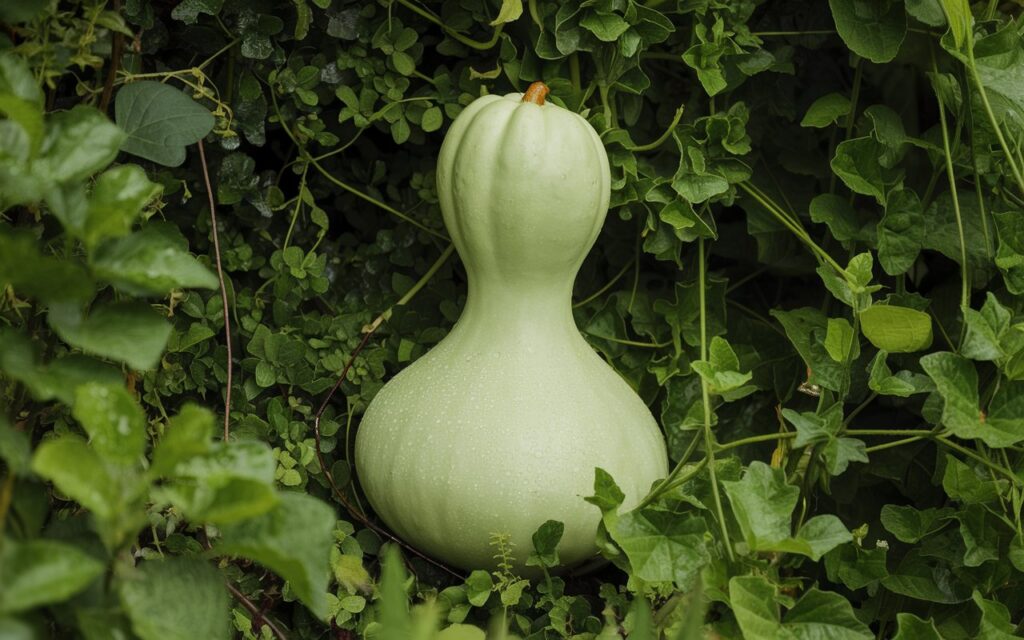Commonly known as calabash (Lagenaria siceraria), white-flowered gourd, or long melon, the bottle gourd is often cultivated for its fruit. When harvested young, it is used as a vegetable, and when fully mature, it can be dried and repurposed as a bottle, container, or even a pipe. Bottle gourd belongs to the cucumber family. Although it is difficult to find in the wild, it is easy to cultivate.
Identification:
This annual vine can grow to lengths of 15 feet (4.5 meters) or more. The fruit features a smooth light-green skin with white flesh and comes in various shapes and sizes. Its stems are covered in long, densely packed hairs that produce a sticky sap. The leaves, which grow on long stalks, range from oval to heart-shaped. Depending on the variety, the leaves may be unlobed or have 3 to 5 irregular shallow lobes. The plant’s white flowers bloom alone or in pairs, opening at night during the summer and closing again by morning.
Edible Use:
While bottle gourd is safe to eat in moderate amounts, you should note that young gourds can sometimes be bitter. If the plant tastes too bitter or seems overly mature, it is best to discard it, as it may contain a buildup of toxins or have spoiled. When it is fresh, you can steam, boil, or fry the fruit, and use it in soups and stir-fries. The young shoots and leaves can also be cooked as a pot herb.
Medicinal Use:
Diabetes: Bottle gourd is particularly helpful in controlling blood sugar levels in diabetics. By eating a piece of the gourd with each meal, you can effectively manage blood sugar. Typically, one or two large bites are sufficient to provide the desired benefits.
Headaches: To relieve headaches, you can create a poultice by crushing the leaves and applying it directly to the painful area on your head.
Boils, Skin Infections, and Irritations: With its anti-bacterial and anti-inflammatory properties, bottle gourd helps treat skin infections and irritations. For these external uses, you can make a poultice from the boiled seeds of the gourd. Then, cover the poultice with a clean cloth and leave it in place as long as possible to reduce swelling and prevent infection spread.
Memory Loss, Depression, and Senility: Studies have shown that bottle gourd can help with mild depression and memory improvement, including in patients suffering from Alzheimer’s disease and age-related senility.
Bottle gourd offers a versatile range of benefits, from culinary uses to various medicinal applications. It effectively helps in managing blood sugar levels, relieving headaches, and treating skin infections. Additionally, it shows promise in improving memory and addressing mild depression. Whether used as a vegetable or in medicinal poultices, bottle gourd proves to be a valuable herb in both your kitchen and herbal medicine cabinet.
For more information on herbs with impressive medicinal properties, check out our detailed post on Borage, where we explore another herb renowned for its wide array of health benefits. Both bottle gourd and borage highlight the remarkable potential of natural remedies in enhancing wellness.
